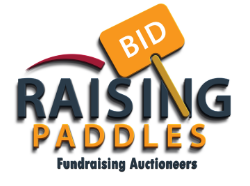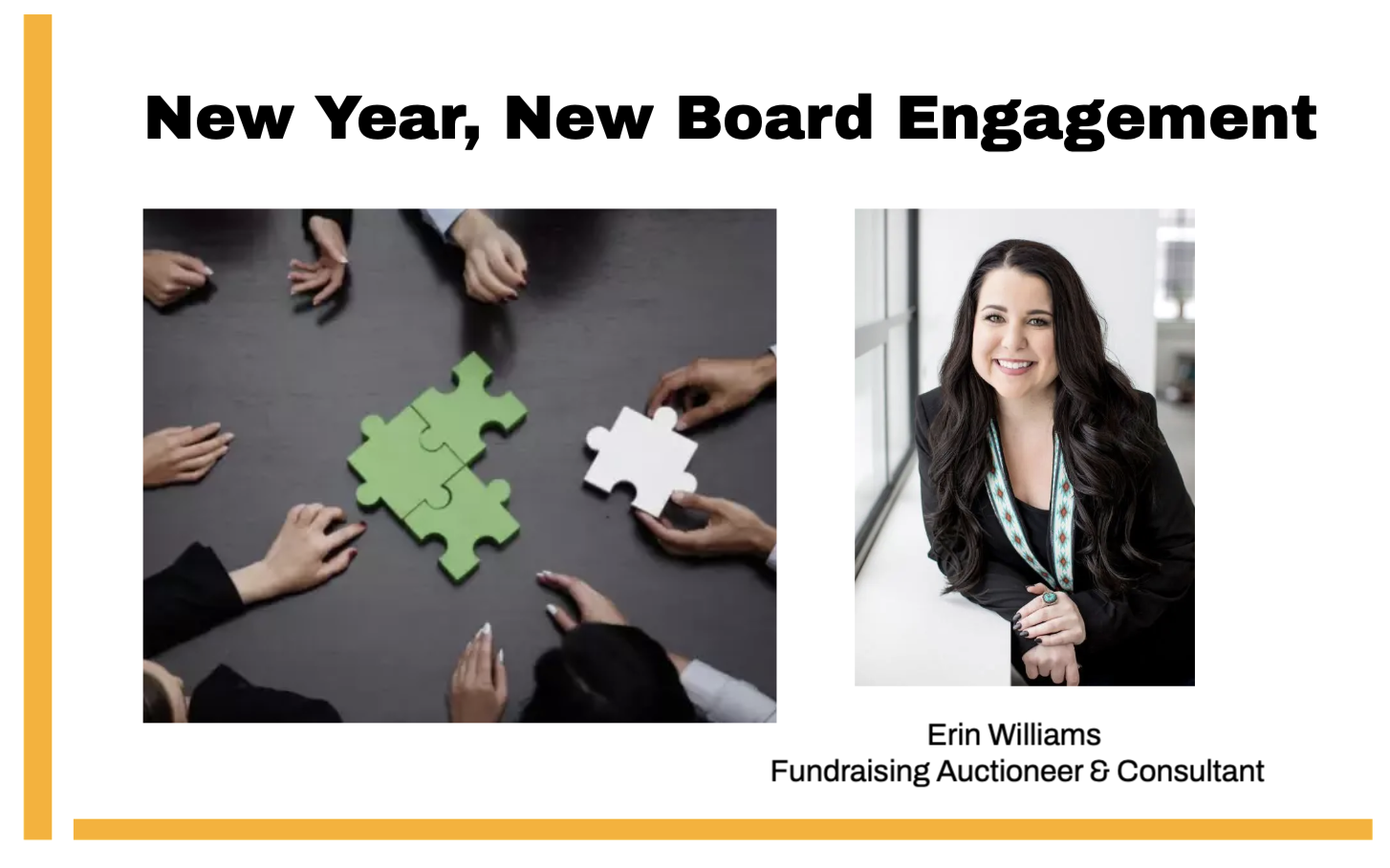By: Erin Williams, Fundraising Auctioneer
As professional fundraisers, we hear all too often from nonprofit leaders, “My board doesn’t have an active role when it comes to the gala” or “My board doesn’t participate in fundraising.” The nonprofit’s financial stability is a primary responsibility of the board and fundraising is a huge part of that! The board must lead by example. If those closest to our missions don’t participate and take an active role in fundraising, why would anyone else?
If you’re interested in engaging your board in fundraising in 2024 here are five goals I recommend focusing on developing:
1.) Advocacy and Storytelling: Train board members to effectively advocate for the organization’s mission and impact and have a holistic understanding of who is served and how they are served. They should be equipped with an elevator pitch as compelling stories about the organization’s work, which can be a powerful tool for engaging potential donors. Their testimonies can also inspire trust and confidence in the organization. When board members are strong advocates, they can help attract more support and partnerships.
2.) Participation in Fundraising Activities: Set a goal for board members to actively participate in fundraising activities such as donor meetings, fundraising events, and direct solicitations. More specifically, concerning your fundraising gala, each board member should commit to raising their paddle at a level of giving during your “mission moment” also known as the paddle raise. Their involvement not only helps raise funds but also signals to other donors that the board is committed to the mission. “Members of the nonprofit’s board of directors should be first donors and first fundraisers” (Tempel and Selier 2016). Personal giving not only demonstrates commitment but also encourages others to contribute. When board members lead by example, it can inspire others to give generously.
3.) Identifying and Cultivating Donors: Board members should aim to identify potential donors from their networks of influence. Board members often have valuable connections, and when they actively seek out prospects, it expands the organization’s donor base. Cultivating these relationships can lead to increased philanthropic support. Regarding special events, a great way for board members to participate is as “table hosts”. This means filling a table with people in their sphere of influence with a passion for the mission and financial capacity to participate in the event’s fundraising. Getting the right people in the room will help an organization reach its goals. We have a great “Board Challenge” handout example to get your board more involved in your gala! Please reach out directly at erin@raisingpaddles.com I’d be happy to share!
4.) Stewardship: Engaging board members in donor cultivation helps improve donor stewardship, which is crucial for long-term fundraising success. “Donors are positively affected when hearing from unpaid board members. At the same time, donor stewardship can help board members become more comfortable with their other fundraising responsibilities” (Tempel and Selier 2016). An example of this is in a post-event gratitude plan. As this relates to your fundraising gala, we recommend that board members take an active role in making gratitude calls to reach guests/donors who participated in the fundraiser after an event.
5.) Vision Casting and Culture Creation: The board and key staff should be challenged to cast vision for the organization. The culture of those an organization serves must be represented on the board. Then the board can best cast vision, create culture, and make a plan for the longevity of providing the needs and services of its community.
If you’d like to discuss any of these ideas further, I’d be happy to chat! I wish you all great fundraising success this fall.






